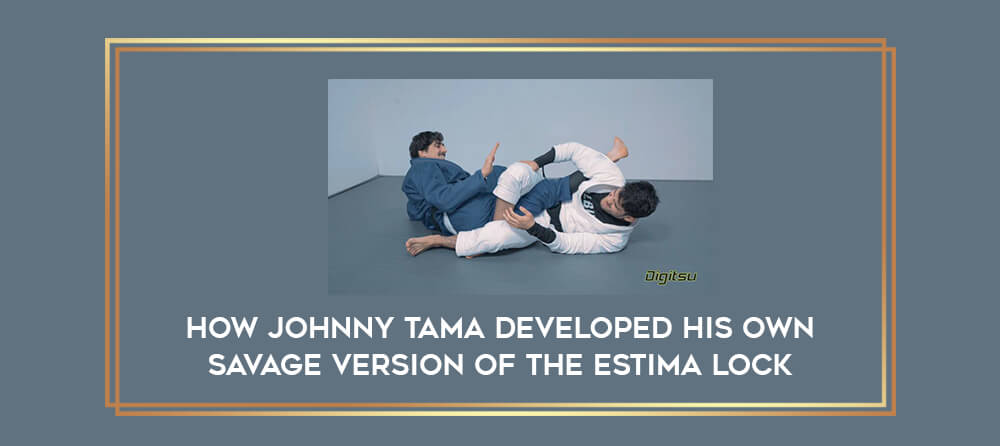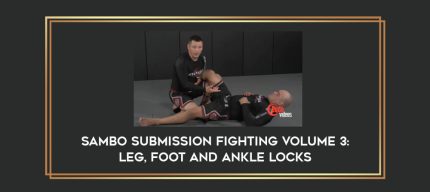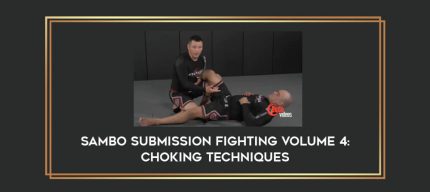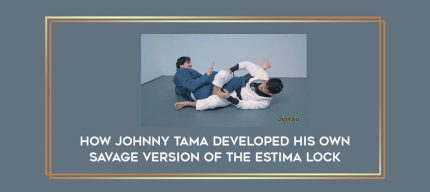How Johnny Tama Developed His Own Savage Version Of The Estima Lock
Course Description
Archive : How Johnny Tama Developed His Own Savage Version Of The Estima Lock Digital Download
Salepage : How Johnny Tama Developed His Own Savage Version Of The Estima Lock
Delivery : Online With Any Device
Johnny Tama has been a recognizable name on the jiu-jitsu competition
scene for some time. But what has put him on the radar and highlight
reels is his adaption of the Estima lock.The Ecuadorian black
belt under Juan Miguel Iturralde first became aware of the footlock when
he saw Braulio and Victor Estima submitting their opponents with it.
There were no DVDs or tutorials out at that time, until Braulio filmed a
set-up from reverse de la riva in 2015. He hadn’t given it much
attention at the time, as he was training full-time at Rubens Charless
Cobrinha BJJ in Los Angeles and th world champs system into his
game.But later in 2015, a lingering rib injury had put Johnny out of
competition and day-to-day training, so he relied on drilling to keep
active. The Estima lock was his first priority, and he started to become more familiar.At
the IBJJF Pans in 2016, Edwin Najmi submitted Johnny’s training
partner, Sinistro Iturralde with an Estima lock in the lightweight
final. That sent Johnny to the training mats so he could study the
position further with someone who experienced it firsthand.”Edwin
didn’t have a huge setup; he just went straight to the foot. He knew it
so well that it was a natural transition. But in my case, I didn’t have
the move down that well so I really began studying the setups, says
Tama. This is where Tamas version of the footlock what he
considers the Tama lock came from: all the various setups and
transitions that lead to this submission.”There is one
from every position. Top, bottom, transitions from sweeps, or when
you’re passing. You can push it to make it happen but it’s always better
to bait the opponent.”He came back to competition for
the 2016 IBJJF Dallas Open in September, breaking one of his opponent’s
feet. That was the first time he submitted from the bottom with the
attack. When he tried the same position in no-gi at the Pan No-Gi not
long after, it didn’t work because he was missing a detail that he later
fixed. Without controlling the leg of the foot you’re attacking,
the opponent can spin out and escape the foot. Trap the leg, prevent
the spin, and control the foot to submit. He could hurt his opponent,
but spinning out was preventing the devastating effects of the footlock.”What
makes my Estima lock different from the Estima brothers’ is that I set
it up from the guard, like any transition that lets me place my shin
underneath the knee. When I lift the leg up, it leaves the foot
dangling, or free to attack. Once the opponent places their weight back
into that leg, it’s too late because the foot is against my belly and
all his weight is what creates the leverage for the submission.In April
at the 2017 Marianas Open, Johnny faced Michael Liera Jr. in the first
round. A month prior at the Pans, Liera was the one who defeated him,
winning by one advantage. Johnny was unable to get into his setups since
Liera was so good at keeping Johnny in his control.””But
at the Marianas, he went for a toreando pass which gave me enough space
to spin under him, says Tama. I was going to lock up 50-50 but I saw
the foot as I passed under and latched on to it. The speed is an
important factor because you have to lock the foot up before they even
have a chance to react. And then the second part that you must do fast
is lock up the leg with your own legs to prevent them from spinning out,
a common defense for most leg locks. Liera wasn’t able to get out, and I
completed the submission as soon as I got my grip on the foot. It
happens that fast.”A similar situation happened at the Five Grappling Super League earlier this month in a super fight against Yan Pica Pau. “I
had a game plan. The idea was to pull to deep half guard first, and go
into the waiter sweep position. Here, you’re using your legs to prop up
their leg and make it light, therefore exposing the foot. But nothing
happened the way I had planned– it was even better. We both pulled
guard at the same time and while I tried to dive for deep half, he
caught his balance by posting his foot on the mat and wrapping his arm
around my ankle to go for his own footlock. This left his other leg
light and the foot was floating right over my belly. “In
a split second I was able to latch the grip on and pull it to my
stomach. And I got the tap within 12 seconds of the match.It’s so
dangerous now, that Johnny no longer uses it in his sparring sessions.
He was hurting too many of his training partners as it’s an
all-or-nothing position for him.”But the drilling is
what helped him most: his injuries (rib and PCL) were almost considered
blessings because it forced him to just drill. “I’m grateful that
the Estima brothers created this footlock and I feel even luckier that I
got to put pieces together and form what I now consider the Tama lock.
Jiu-jitsu is constantly evolving and we must always adapt. New positions
come into play all the time and we must always develop our own system.
For me, this position is successful.”






















